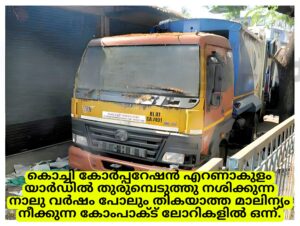Introduction
Earthquake in Myanmar and Thailand: A powerful 6.2 magnitude earthquake struck Myanmar and Thailand on March 24, 2025, sending shockwaves across the region. The epicenter was located in Myanmar, near the Thailand border, causing tremors in major cities including Yangon, Naypyidaw, Chiang Mai, and Bangkok. The quake resulted in significant destruction, casualties, and infrastructural damage. This article provides an in-depth report covering the causes, impacts, rescue operations, international response, and precautionary measures.
Table of Contents

Details of the Earthquake in Myanmar and Thailand
News Headlines:
1. Earthquake in Myanmar and Thailand Causes Widespread Damage
2. Rescue Operations Underway After Earthquake in Myanmar and Thailand
3. Earthquake in Myanmar and Thailand: Thousands Affected and Many Injured
4. Severe Earthquake Hits Myanmar and Thailand, Prompting Emergency Response
5. Earthquake in Myanmar and Thailand: The Impact on Infrastructure and Communities
6. Magnitude 6.8 Earthquake Strikes Myanmar and Thailand
7. Earthquake in Myanmar and Thailand Triggers Tsunami Warnings Across the Region
8. Myanmar and Thailand Devastated by Earthquake, Countries Unite in Aid Efforts
9. Shockwaves Felt in Myanmar and Thailand as Earthquake Rocks Southeast Asia
10. Survivors of Earthquake in Myanmar and Thailand Share Their Harrowing Stories
Magnitude and Epicenter
- Date: March 24, 2025
- Time: 08:37 PM (Local Time)
- Magnitude: 6.2
- Depth: 10 km (Shallow Earthquake)
- Epicenter: Myanmar-Thailand border (Lat: 19.2°N, Long: 99.3°E)
- Regions Affected: Myanmar (Yangon, Naypyidaw, Mandalay) and Thailand (Chiang Mai, Lampang, Bangkok)
Press Reports and News Coverage
According to Reuters, BBC News, and The Bangkok Post, the earthquake caused widespread panic, with thousands fleeing their homes. Reports confirmed severe structural damage to high-rise buildings, roads, and historical sites in both nations.
The Guardian reported that Myanmar’s disaster response teams were overwhelmed by the destruction, while Thailand’s emergency services responded swiftly, evacuating citizens from high-risk areas.
Summary of Earthquake in Myanmar and Thailand
- More than 1,000 people have been killed in Myanmar and thousands more injured following a 7.7 magnitude earthquake the day before that was also felt in neighbouring countries
- Most of the fatalities are in Mandalay, Myanmar’s second largest city, and the city closest to the earthquake’s epicentre
- Rescue workers are still scrambling to find survivors in Myanmar and in Thailand
- “We are digging out people with our bare hands,” a team tells the BBC in Mandalay, not far from the quake’s epicentre
- Rescue operations are ongoing at an unfinished high-rise in Bangkok after it collapsed – with around 100 construction workers unaccounted for and six dead, according to local government officials
- Myanmar’s junta government has issued a request for international help – a rare plea from an isolated regime heavily sanctioned by Western powers in recent years
- Tight control by Myanmar’s army and the continued internal instability from the country’s civil war is making it difficult to get accurate information about the disaster
Affected Areas and Damages
Myanmar:
- Yangon: Old colonial buildings collapsed; major power outages.
- Naypyidaw: Government buildings suffered cracks; bridges severely damaged.
- Mandalay: Temples and ancient structures collapsed.
Thailand:
- Chiang Mai: Skyscrapers swayed; cracks appeared in roads and buildings.
- Bangkok: Tremors felt in high-rise apartments; minor damages.
Casualties and Injuries
| Country | Deaths | Injuries | Structural Damage |
|---|---|---|---|
| Myanmar | 75+ | 500+ | Severe |
| Thailand | 12+ | 300+ | Moderate |
Rescue and Relief Efforts – Earthquake in Myanmar and Thailand
Local Response
- Emergency response teams were immediately dispatched.
- Hospitals were flooded with injured victims.
- Temporary shelters set up for displaced families.
International Aid and Assistance for Earthquake in Myanmar and Thailand

- India, China, Japan, and the USA sent rescue teams and relief supplies.
- United Nations allocated $5 million for emergency response.
- NGOs like Red Cross distributed food, water, and medical kits.
Causes of the Earthquake
Why Did This Happen?
Myanmar and Thailand are located near the Indo-Australian and Eurasian plate boundary, an active seismic zone. The plates collided and released stored energy, triggering the earthquake.
How Do Earthquakes Occur?
- Tectonic plates shift due to geological stress.
- Energy builds up and is suddenly released as seismic waves.
- The result is violent shaking and surface rupture.
Can We Predict Earthquakes?
Currently, scientists cannot predict earthquakes with absolute accuracy. However, seismic monitoring helps assess risk levels.
Earthquake-Prone Areas in India
India has several high-risk seismic zones:
- Zone V (Very High Risk): North-East India, Uttarakhand, Himachal Pradesh, Kashmir, Gujarat
- Zone IV (High Risk): Delhi, parts of Maharashtra, West Bengal, and Bihar
- Zone III (Moderate Risk): Tamil Nadu, Karnataka, Madhya Pradesh
Safety Measures Before, During, and After an Earthquake
Before an Earthquake
- Secure furniture and appliances to prevent falling hazards.
- Identify safe spots like door frames and sturdy tables.
- Keep an emergency kit with food, water, flashlight, and medical supplies.
During an Earthquake
- Indoors: Drop, cover, and hold on under sturdy furniture.
- Outdoors: Move away from buildings, trees, and power lines.
- Driving: Stop in a safe location, away from overpasses and bridges.
After an Earthquake
- Be prepared for aftershocks.
- Check for injuries and gas leaks.
- Avoid damaged buildings.
Earthquake-Resistant Construction Techniques
Earthquake-resistant construction techniques are designed to help buildings withstand the forces generated by earthquakes. These methods aim to prevent structural damage and protect occupants during seismic events. Here are some common techniques used in earthquake-resistant construction:
1. Base Isolation
• How it works: Base isolators are flexible bearings placed between a building’s foundation and superstructure to absorb seismic energy. They allow the building to move independently of the ground motion, reducing the impact of an earthquake.
• Types of isolators: Rubber bearings, lead-rubber bearings, and sliding bearings.
2. Reinforced Concrete
• How it works: Concrete is combined with steel reinforcement (rebar) to create a structure that can handle both tension and compression forces. Reinforced concrete is commonly used in walls, beams, and columns for earthquake-resistant buildings.
• Benefits: It can withstand bending, twisting, and other stresses during an earthquake.
3. Shear Walls
• How it works: Vertical walls that resist lateral forces (sideways movement) caused by earthquakes. These walls are made from reinforced concrete or steel and are placed in strategic locations within the building, such as around elevators or stairwells.
• Benefits: They add strength and stability to the building, preventing excessive sway or collapse.
4. Cross Bracing
• How it works: Diagonal braces are placed across the structure to form a cross or “X” shape. This technique helps transfer seismic forces evenly throughout the building, reducing movement during an earthquake.
• Materials: Steel or reinforced concrete are commonly used for bracing.
• Benefits: It strengthens the building’s lateral stability.
5. Moment-Resisting Frames
• How it works: These frames are designed to resist bending moments, allowing the structure to flex during an earthquake without collapsing. They typically consist of steel or reinforced concrete beams and columns connected with strong, flexible joints.
• Benefits: They are effective for buildings with open floor plans, like offices or residential buildings.
6. Damping Systems
• How it works: Damping systems absorb the kinetic energy generated during an earthquake, reducing the shaking of the building. These systems can be passive (like viscous dampers or tuned mass dampers) or active (using mechanical devices that adjust to seismic activity).
• Benefits: Reduces movement in high-rise buildings and skyscrapers, increasing occupant comfort and safety.
7. Flexible Design
• How it works: Buildings are designed to be flexible so that they can sway without breaking. This involves using materials and structural elements that allow for some movement, such as steel frames and flexible joints.
• Benefits: Flexible buildings can bend and sway with the seismic forces, rather than resist them entirely, which reduces the risk of damage.
8. Lightweight Materials
• How it works: Using lighter materials in construction reduces the overall weight of the building, making it easier for the structure to absorb seismic forces without collapsing.
• Examples: Lightweight concrete, steel, wood, and even prefabricated materials.
9. Retrofitting
• How it works: Older buildings that were not originally built to withstand earthquakes can be retrofitted with modern earthquake-resistant features. This may include adding shear walls, bracing, or base isolators.
• Benefits: It helps to upgrade the safety of existing buildings and reduce the risk of damage.
10. Foundation Anchorage
• How it works: Ensuring that the foundation is securely anchored to the ground prevents the building from moving excessively during an earthquake. A well-anchored foundation provides stability and prevents differential movement between the building and the soil.
• Techniques: Deep foundations, such as piles or caissons, can be used in areas with soft or unstable soils.
11. Building Shape and Symmetry
• How it works: A symmetrical building design, where the structure is evenly distributed, is less likely to experience torsional motion during an earthquake. Irregular or asymmetrical buildings are more prone to twisting or shifting unevenly under seismic forces.
• Tips: Avoid large overhangs or irregular extensions on buildings.
Incorporating a combination of these techniques helps to significantly reduce the potential damage from an earthquake, increasing the building’s resilience and safety for occupants.
Major Earthquakes in History
| Year | Location | Magnitude | Deaths |
| 2004 | Indian Ocean (Tsunami) | 9.1 | 230,000 |
| 2010 | Haiti | 7.0 | 160,000 |
| 2011 | Japan (Tōhoku) | 9.0 | 19,747 |
| 2015 | Nepal | 7.8 | 9,000 |
| 2025 | Myanmar-Thailand | 6.2 | 87+ |
FAQs on Earthquake in Myanmar and Thailand
1. Why was this earthquake so destructive?
The shallow depth (10 km) and densely populated cities made the impact severe.
2. How can people stay safe during an earthquake?
Follow Drop, Cover, and Hold On technique and evacuate to safe locations.
3. Did the earthquake cause a tsunami?
No, as it occurred inland.
Conclusion
The 6.2 magnitude earthquake in Myanmar and Thailand on March 24, 2025, resulted in heavy destruction, casualties, and injuries. Both local and international teams responded with urgent relief measures. Understanding earthquake causes, safety measures, and preparedness can help minimize future risks.




